Combat aircraft. Humpback hawk as a symbol
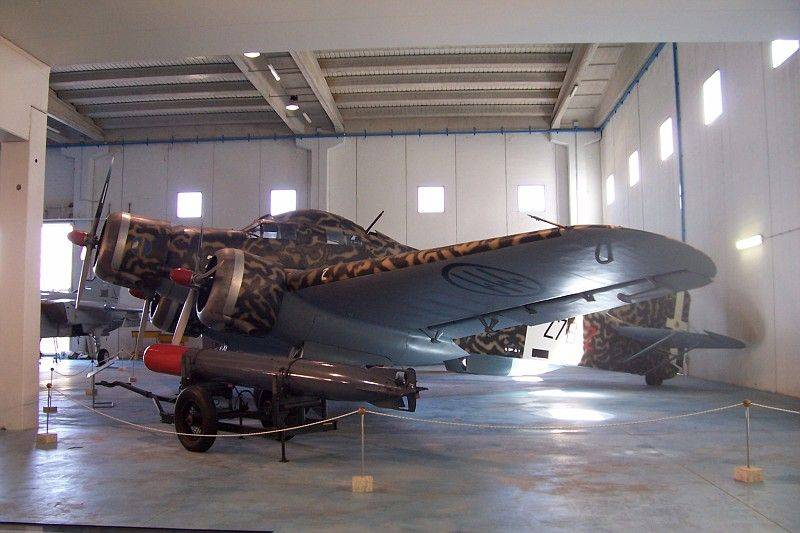
Well, yes, here we have a real symbol of the Royal Air Force and at the same time the most massive Italian bomber during the Second World War. A very peculiar creation of Alessandro Marchetti, released in a very decent (for Italy) circulation of almost one and a half thousand units (1458 if exactly).
The Italian station wagon was used as a bomber, torpedo bomber, reconnaissance and transport. For its time, it was very good in terms of flight performance, before the start of World War II, he repeatedly participated in the air race and (importantly!) Won in them! Well, and on the account of SM.79 several world records of speed and carrying capacity.
In general, he was still a "Hawk." In the mid 30s of the last century. But in the Royal Italian Air Force, the plane received the name "hunchback". So - "Brokeback Hawk."
The three-engine scheme in those days was not something so outstanding, but also not very common. Dutch Fokker F.VII / 3m, German Junkers Ju52 / 3m, Soviet ANT-9 and SM.79. There were three-engine developments in other countries, but somehow did not take root. Preference was given in favor of two and four-engine layout.
Yes, three motors provided some advantage over two in terms of reliability and range, but by the forties due to an increase in power characteristics aviation engines, three-engine aircraft began to disappear from the fleets of all countries.
Only in Italy until the very end of the war did three-engine bombers remain in combat formation. True, this was due not so much to the outstanding characteristics of the aircraft as to the state of finance in fascist Italy.
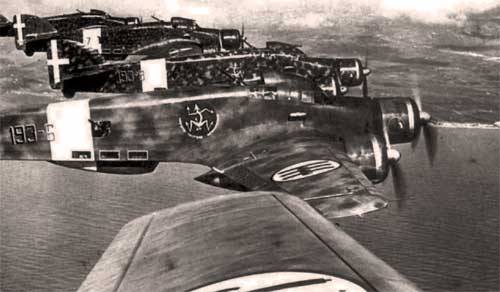
SM.79, like many combat aircraft that became famous during World War II, had completely civilian roots. In 1933, Marchetti decided to create a high-speed passenger plane, which could take part in the international race scheduled for 1934 along the London - Melbourne route.
As the platform was involved SM.73, also a three-engine aircraft, which was produced in the military version SM.81.
In this project, he clearly built on his previous machine, also three-engine: S.73 (military version - S.81), built in 1934 using many similar design solutions. The frame of the fuselage is steel pipes with a sheathing from duralumin sheet, plywood and canvas, a free-carrying wooden wing, almost identical plumage.
The place where all ideas were united was the company Societa Idrovolanti Alta Italy, (Societa Idrovolanti Alta Italia - SIAI), better known under its trademark Savoy.
In general, SIAI was actively engaged in the production of flying boats and was known throughout the world in this regard. Flying boats "Savoy" S.16 and S.62 were in service with the Soviet Air Force, and the large S.55 were operated on the airlines of the Far East, even during World War II.
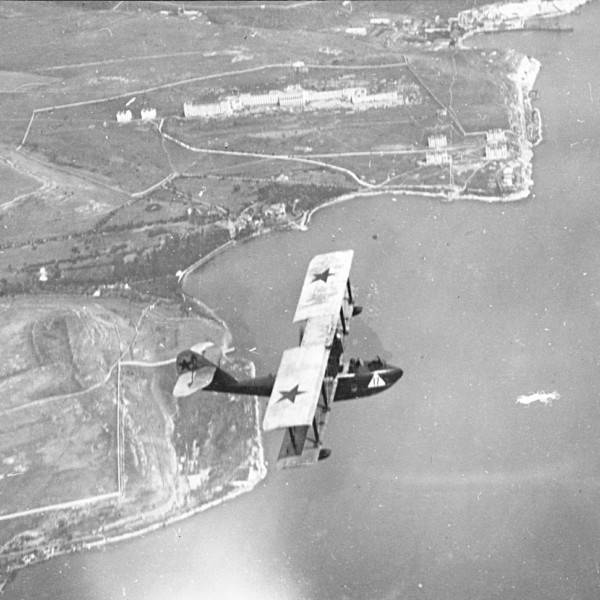
An experimental aircraft with the civilian designation I-MAGO made its first flight on October 8, 1934. True, the races were long gone, the English De Havilland DH.88 "Comet" was the winner.
But the plane at Marchetti and the Savoy turned out to be more than successful. True, I had to immediately install other engines, in fact turned out to be Alfa Romeo 125RC35 with a capacity of 680 liters. with., licensed "Bristol Pegasus". And with them the plane reached a speed of 355 km / h, and later - 410 km / h. As a result, the SM.79 became the fastest multi-engine aircraft in Italy, ahead of the S.81 bomber, which began to enter service.
In 1934, a competition was announced for a new medium twin-engine bomber for the Italian Air Force. The requirements of the competition stipulated that the bomber should be twin-engine.
Eight projects were submitted to the competition. SIAI has proposed its S.79B aircraft. The project failed because it was a rough alteration of the passenger S.79P into a bomber with two French Gnom-Ron K14 engines. Plus, the commission did not like the placement of machine guns and bomb bombs.
However, the company ordered 24 aircraft. In principle, there were reasons for such a step; the SM.79 design was quite simple in terms of technology and really made it possible to quickly deploy mass production of aircraft if necessary. It made sense to try the plane in a pre-production game, because Italy was preparing for the war. For which - it was still not entirely clear, but was preparing.
The first SM.79 was equipped with bomb racks and conducted a test cycle on it. The tests were successful. The wide and not very aerodynamically sleek fuselage of the passenger car was preserved, but the same hump with machine guns appeared over the pilot's cabin. One fixed Breda-SAFAT 12,7 mm caliber was looking forward, and the same, but the moving machine gun was at the shooter to defend the rear hemisphere.
Another large-caliber machine gun was installed in the rear of the fuselage, in the gondola, for firing back and down. And there was a 7,69 mm Lewis machine gun, it was mounted above the gondola inside the fuselage in a special installation. The machine gun could be thrown from side to side and fired from it through large rectangular hatches on the left and right sides.
Very dubious frontal weapons entirely on the conscience of Marchetti. The designer considered that since the plane was fast, they would hardly be attacked in the forehead too. So, one machine gun above the pilot’s head is enough for the eyes. A strange approach, but it happened like that.
The bomb bay was very original. It was located in the central part of the fuselage and, as it were, shifted to the right of the axis of the aircraft. This was done in order to save the passage to the tail.
Up to 1250 kg of bombs in various combinations (2 x 500 kg, 5 x 250 kg, 12 x 100 kg or 12 cartridges with small 12 kg fragmentation bombs) could be loaded into the bomb compartment. All bombs were suspended vertically, except for 500 kg, which were mounted obliquely.
The crew consisted of four people: two pilots (the second pilot was also a scorer), a flight engineer and a radio operator. The scorer was usually located in the nose and should have the best view. But in our case, there was a second motor. Therefore, in SM.79, the scorer was put into a gondola made under the fuselage in the rear. The front wall of the gondola was transparent, which, in general, provided a working overview. That is why a passage to the tail section was needed.
From his gondola, the scorer could not only aim, but also rotate the aircraft using the steering wheel control during the bombing.
The first SM.79 serial bombers appeared in October 1936. And by January next year, the company had completed the same order for 24 aircraft. On production aircraft, the "hump" lengthened, teardrop-shaped protrusions appeared on its sides, and the glazing from above disappeared. Lewis from World War I was replaced with a more modern SAFAT of the same caliber.
Officially, the bomber was adopted under the name SM.79 Sparviero - "Hawk", but this name did not take root, and in parts it was called simply "gobbo" - "hunchback".
Starting from the 2nd series, the "hump" was shortened (before it reached almost the front door), the drop-shaped protrusions were removed from it, but for the radio operator and the flight engineer they made additional windows.
They slightly deepened the gondola of the scorer, twisted the exhaust pipes of the engines (away from the nacelles), introduced additional stabilizer extensions. Here in this form, almost unchanged, SM.79 was in mass production for seven years.
Seven years - here it is not about some particularly outstanding characteristics of the aircraft. There simply were no competitors. All the aircraft that offered the same Fiat or Kaproni simply turned out to be much worse.
Meanwhile, in 1937, a plan was adopted to expand the Italian Air Force, according to which in 1939 it was supposed to have about 3000 bombers. Mussolini's plans were more than gigantic, but the practice turned out to be somewhat different. Italy was simply unable to produce so many planes in two years, plus the planes participating in the plan (Fiat BR.20, Caproni Sa.135, Piaggio R.32) stubbornly did not want to enter the required condition .
So the bet was justifiably made on the three-engine SIAI. And pilots began to be transferred to training from fighters, this was required by the really high speed of the bomber and fairly easy control.
Yes, made on the basis of a passenger aircraft, SM.79 had many shortcomings generated precisely by alteration: inconvenient placement of the scorer, small bomb bay with a rather large fuselage, defensive weapons in the side hatches. All this caused quite reasonable criticism. Nevertheless, there was nothing to choose from.
Meanwhile, the civil war in Spain began, and the opportunity appeared to test the bombers in combat conditions. On SM.79, both Italian pilots fought, whom Mussolini “lent” Franco, and the Spaniards.
SM.79 with Italian crews operated near Seville, Bilbao, participated in battles near Brunet and near Teruel. In May 1937, five Italian bombers damaged the Republican battleship Jaime I in the port of Almeria.
It turned out that the speed of SM.79 allowed them to fly unaccompanied during the day. Of all the republican fighters, only the I-16, of which there were not many, could catch the "Hawk". And the car was very tenacious. Of the almost hundreds of bombers delivered, 16 were actually lost: the Spaniards lost 4 aircraft, the Italians 12.
In general, SM.79 was used more than successfully. The Spaniards, he received the nickname "Horobado", that is, "hunchback".
Generous Italians handed over the remaining 61 “hunchbacks” to the Spaniards. In the Spanish Air Force, they survived World War II, and the last of them flew in the Spanish North African colonies of Ifni and Rio de Oro until the early 60s.
While combat SM.79 dropped bombs on Spanish soil, their brothers in Italy carried out propaganda tasks, participating in flights and setting records. It was necessary to show the whole world the achievements of the fascist regime of Mussolini, so really SM.79 took part in many flights. In the flight Marseille - Damascus - Paris SM.79 took three first places. Italians also participated in the flight Rome - Dakar - Rio de Janeiro. One of the pilots was Mussolini Jr.
In addition, SM.79 with P.11 engines from Piaggio set a series of world speed records in the category of aircraft with payloads of 500, 1000 and 2000 kg.
In general, in the pre-war period, the SIAI, by then already renamed Savoy-Marchetti, was very aggressively breaking into export markets. Marchetti believed that a twin-engine aircraft would be better for export. And even created a prototype SM.79V (Bimotore).
Therefore, despite the rejection by the Ministry of Aeronautics of the project S.79B (Bimotore), he continued to work in this direction, bringing the project to the construction of a prototype.
Meanwhile, the three-engine SM.79 became the main striking force of the Italian Air Force. And with them, Italy entered World War II. In addition to the combat experience gained in Spain, these aircraft were used for landing during the capture of Albania in 1939, as well as in the attack on Greece.
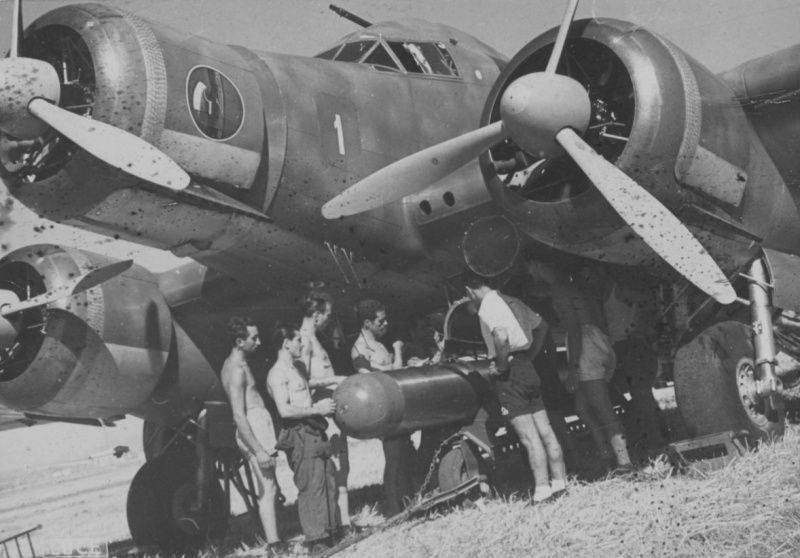
Immediately after Italy declared war on England and France, Italian bombers fell upon their prescribed targets. Taking off from airfields in Sicily, the Italians bombed Malta. Aircraft based in Libya attacked French bases in Tunisia. From Italy they flew to Corsica and Marseille, from Ethiopia to Aden.
In North Africa, in September 1940, four S.79 regiments supported the Italian offensive on Egypt. At first, they even tried to use them as attack aircraft to support troops on the battlefield and hunt for the English tanks and armored cars. It did not work, the British anti-aircraft gunners very quickly disappointed the Italians.
But the plane, despite the great losses of both the combat plan and the technical one, recaptured the entire African campaign up to the defeat of the Axis countries.

The campaign revealed many SM.79 weaknesses. Primitive turrets that limit the sectors of fire, the low rate of fire of large-caliber machine guns and their unreliability, weak armor and the absence of protected gas tanks. It turned out that the parades and the actual combat use are still different things.
There were difficulties with repair in the field, due to which the Allies got more than 30 aircraft with varying degrees of malfunction. It was especially difficult with an integral wing.
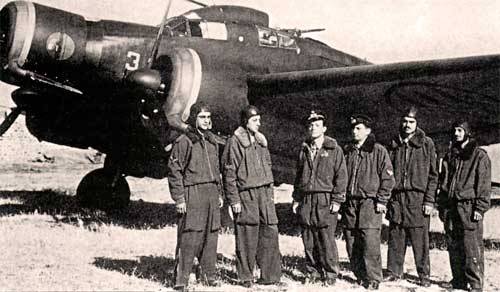
In addition, in 1941 a new generation of faster fighter aircraft began to appear in the air, and the speed of SM.79 was no longer such protection as before. And by mid-1941, the number of Hawks in the Italian Air Force began to decline. Moreover, the more perfect (and also three-engine) bomber Kant Z.1007 arrived.

And the "Hawks" firmly registered in naval aviation, where they fought until the very end of the war.
On July 8, 1940, SM.79 attacked and damaged the Gloucester cruiser. This was the first success of the "Hawks", the Italians did not achieve direct hits, but they battered the ship well with close breaks.
Torpedo bombers on the basis of SM.79 celebrated their success on the night of September 18, 1940, when two SM.79 torpedoes hit the cruiser "Kent". The crew defended the ship, but the cruiser was dragged to Gibraltar, where he stood for almost a year in repair.
The list of successful attacks by SM.79 torpedo bombers was added to the cruisers Liverpool, Glasgow, Phoebus, Arethusa, which received damage as a result of the actions of SM.79 crews. And for the Quentin destroyer, it all ended sadly, on December 2, 1942, he sank after meeting with torpedo bombers.
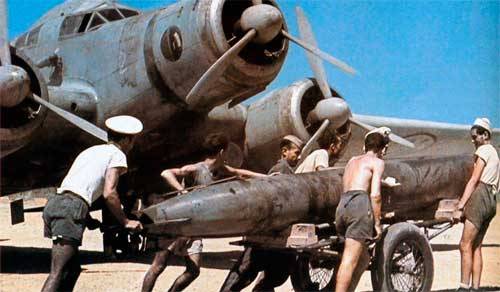
In 1943, torpedoes were received by the Indomiteable aircraft carrier (not fatal) and a number of transport ships from the Maltese convoys. The destroyer "Janus" was sunk by an aviation torpedo.
On September 8, 1943, Italy capitulated and split in half: a puppet Italian social republic was created in the north under German control, and the British and Americans occupied the south. At the aerodromes there was still a significant amount of SM.79, which the Allies converted into transport. The cars were enough for a whole regiment (3rd transport aviation regiment), equipped precisely with SM.79.
So the “Hawks” began not only to carry goods and passengers, but also to scatter leaflets, toss out paratroopers and cargo beyond the front line. And after the end of the war, all SM.79 became transport aircraft.
By 1950, almost all Hawks had exhausted their resources. Records for the duration of the service were aircraft, which in 1949 acquired Lebanon for its needs. These machines lasted until 1960. One of Lebanese SM.79 is now in the Italian Museum stories aviation.
S.79 was released more than all the other Italian multi-engine bombers combined. We can say that the "Humpback Hawk" became the face of the Italian strike aircraft, having fought on almost all fronts. Even on the Eastern Front, near Stalingrad, where the Romanian air units fought, which were armed with these aircraft.
But by 1941, this machine was so outdated that it practically did not constitute a combat value. Guilt is not Marchetti, but progress. For which Italy could not keep up with all its desire.
LTX SM.79
Wingspan, m: 21,80
Length, m: 15,60
Height, m: 4,10
Wing area, м2: 61,00
Weight, kg
- empty aircraft: 6 800
- normal takeoff: 10 500
Engine: 3 x Alfa Romeo 126 RC34 x 750 hp
Maximum speed km / h
- by the ground: 359
- at height: 430
Cruising speed, km / h: 360
Practical range, km: 2 000
Maximum rate of climb, m / min: 335
Practical ceiling, m: 7 000
Crew: 4-5
Armament:
- one course machine gun Breda-SAFAT 12,7 mm;
- two machine guns Breda-SAFAT 12,7 mm for protection from the tail;
- one machine gun Breda-SAFAT 7,7 mm for side defense.
Bomb load:
2 x 500 kg bombs, or 5 x 250 kg bombs or 12 x 100 kg bombs.
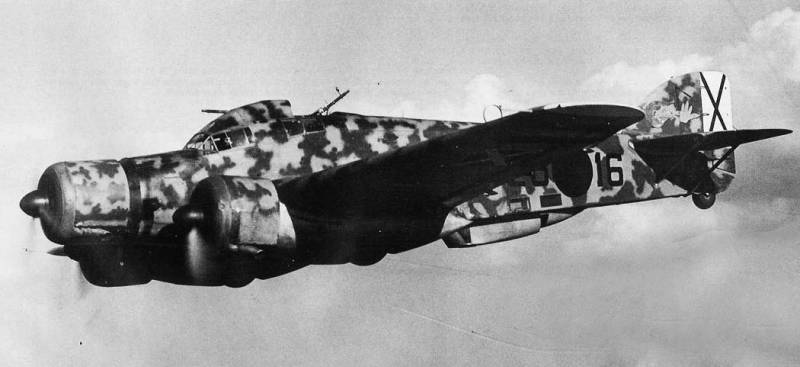
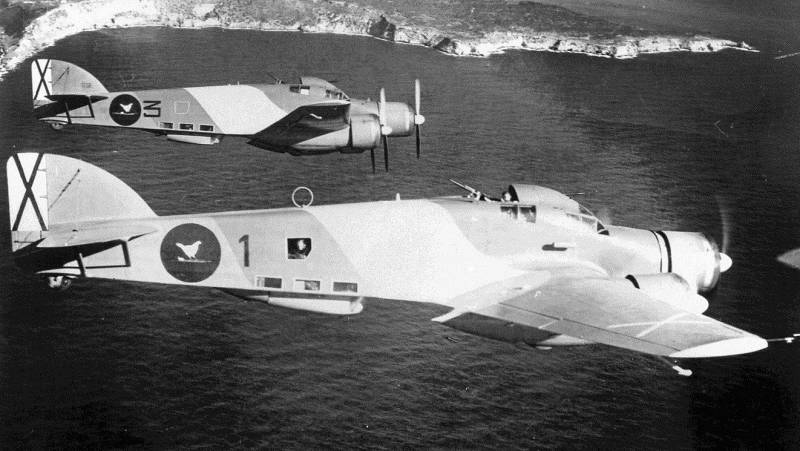
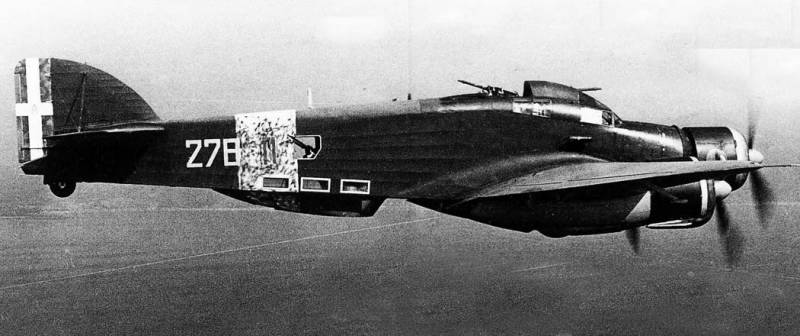
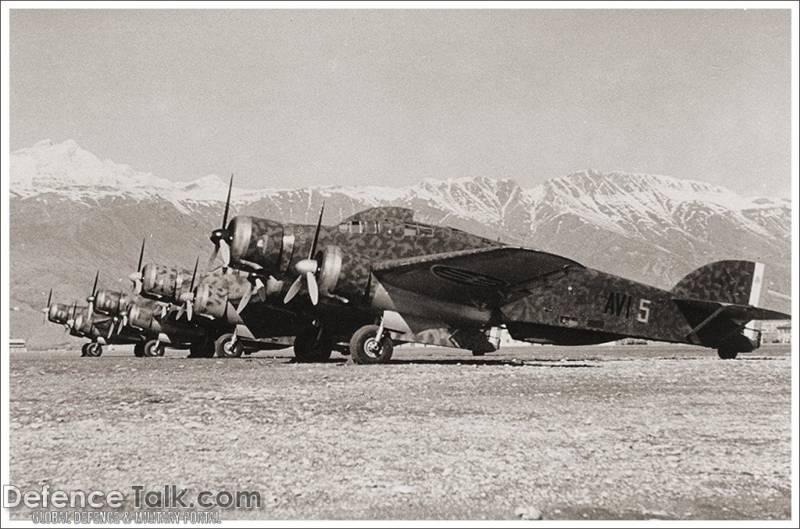
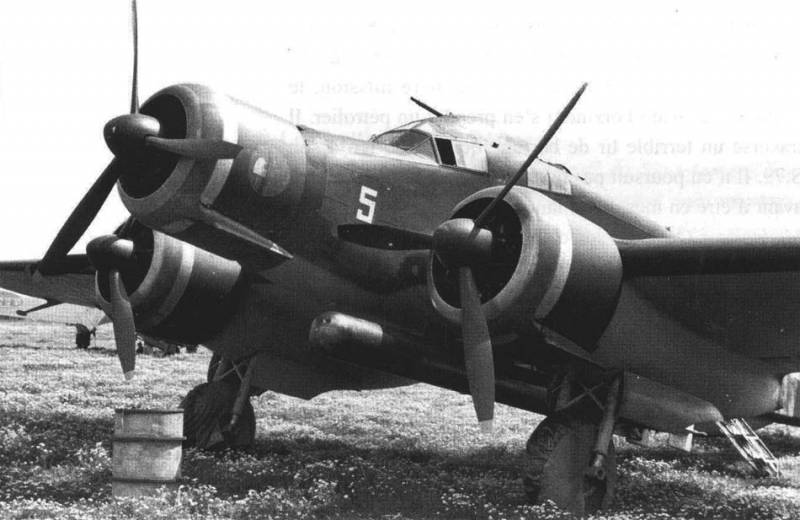
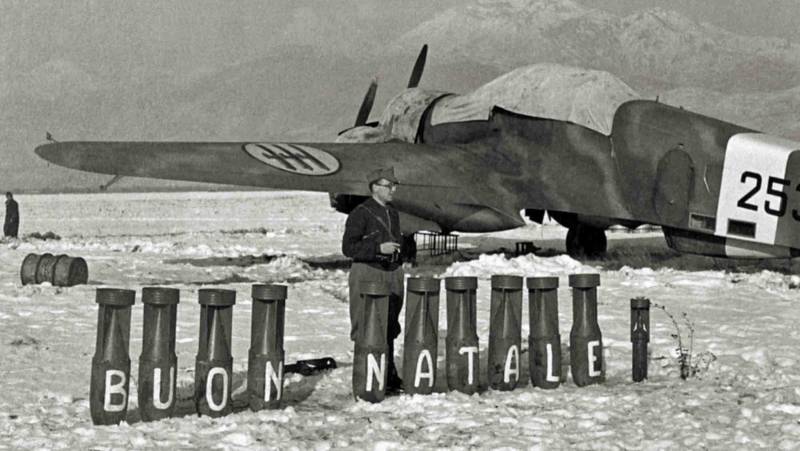
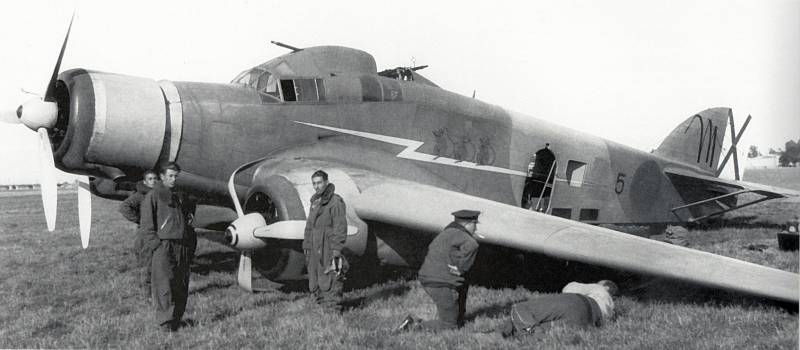
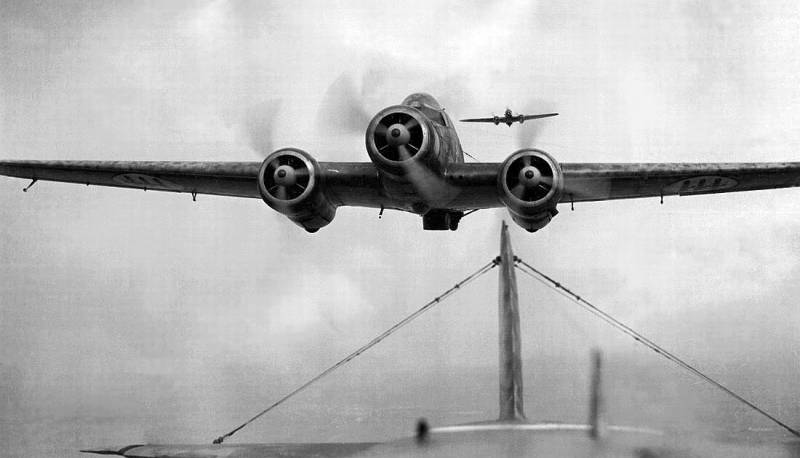
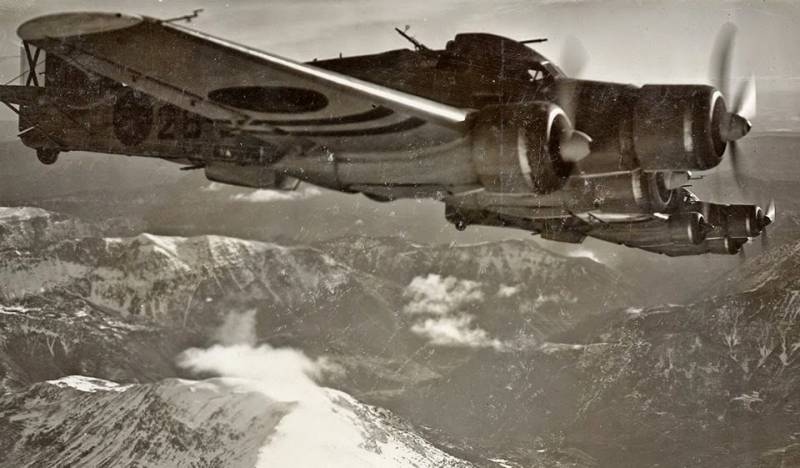
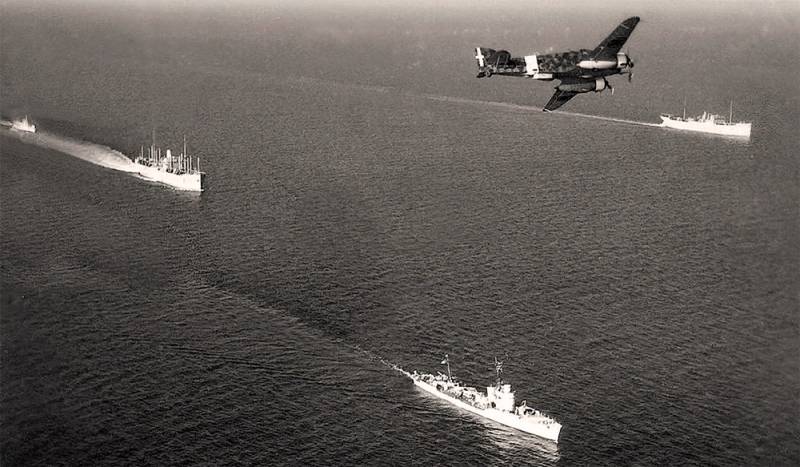
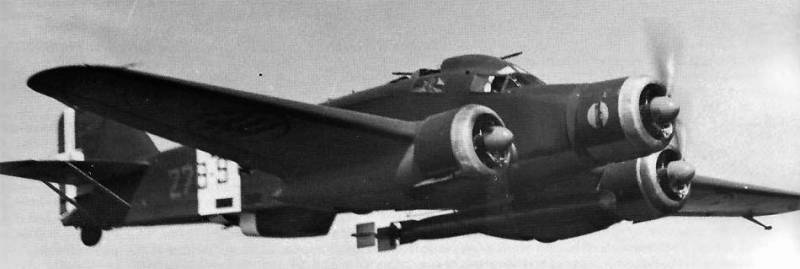
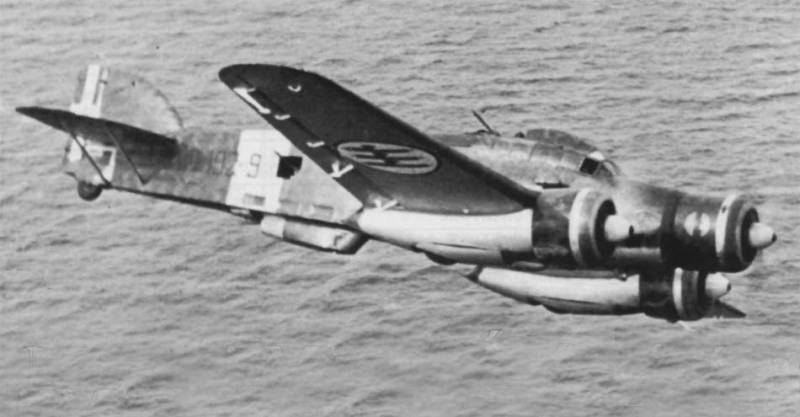
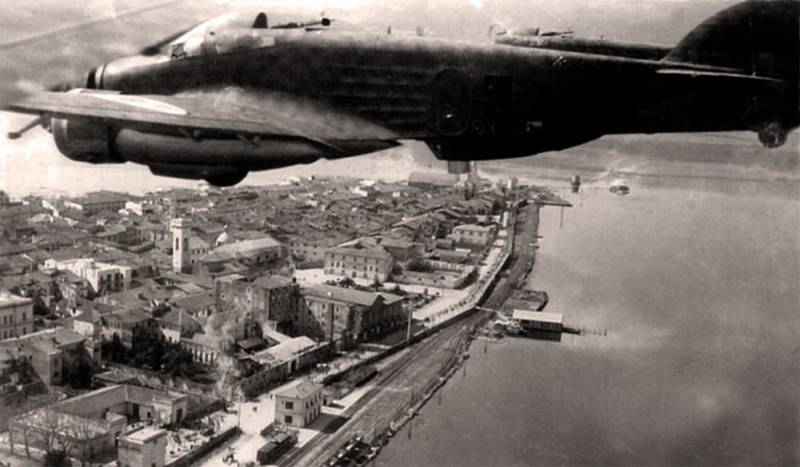
Information